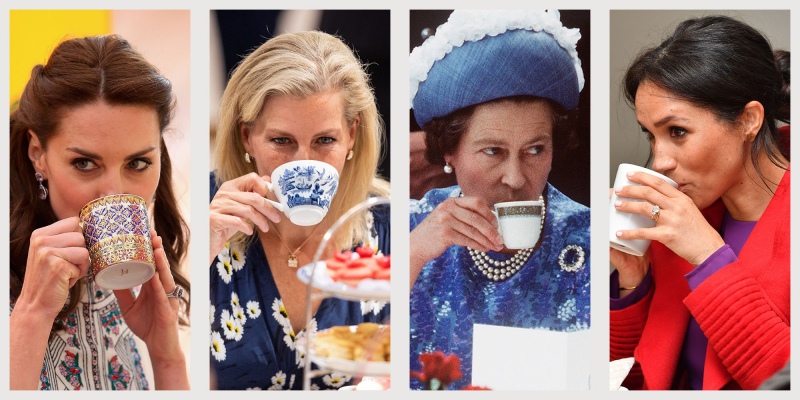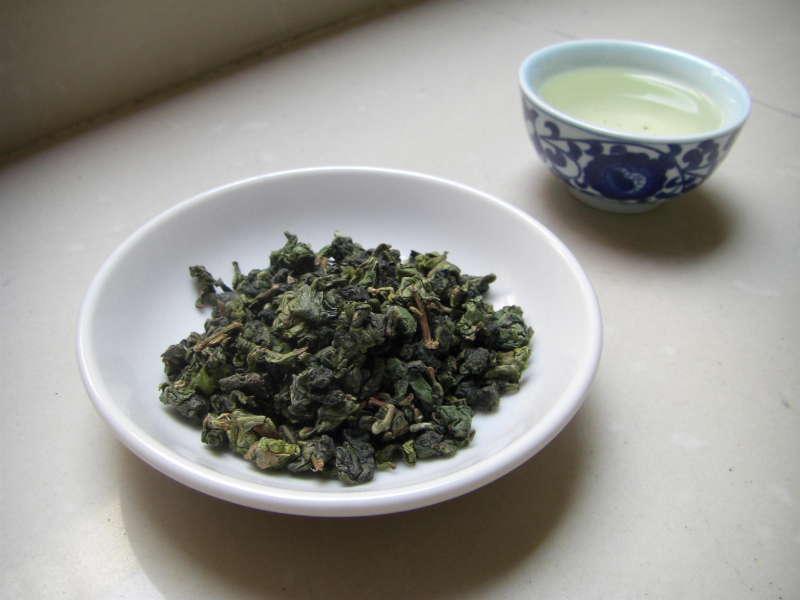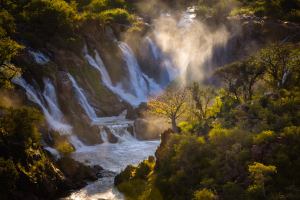Top 15 Things You Didn't Know About Tea
It is no doubt that tea is one of the most popular drinks on this planet. But how much do you actually know about the tea you are drinking every day? If you ... read more...love tea, then you know the beverage has a long history and heritage. Let's go through some of the things you might not know about this popular drink!
-
As we all know, the tea we are drinking today has a rich history, as tracing tea's original roots proves that it is probable that the tea plant originated in regions around southwest China, Tibet, and Northern India. However, both Chinese and Indian have their own myths and legends about how tea is discovered.
According to Chinese legend, tea was accidentally discovered in 2737 B.C.E. by Emperor Shen Nong, a skilled ruler, and scientist. Legend has it that while boiling water in his garden, a leaf from an overhanging wild tea tree drifted into Shen Nong's pot. The leaf's taste blends out so well with the boiling water, and the Emperor enjoyed drinking the infused water so much that he was compelled to research the plant further. In his research, Shen Nong is believed to discovered tea's medicinal properties as well.
On the other hand, Indian legend attributes the discovery of tea to Prince Bodhi-Dharma, an Indian saint who founded the Zen school of Buddhism and happened to left India to preach Buddhism in China, where he discovered tea. Prince Bodhi-Dharma vowed to meditate for nine years to prove his Zen principles, but towards the end of his meditation, he fell asleep. After waking up, he was so distraught with himself to the point that he cut off his eyelids, and threw them to the ground. Legend has it that a tea plant sprung up on the same spot to sanctify his sacrifice.

Emperor Shen Nong discovered tea - www.theeastindiacompany.com 
Prince Bodhi-Dharma meditating - Wikipedia -
As said above, Chinese believes that tea was accidentally discovered by Emperor Shen Nong in 2737 B.C.E. The legend goes that after discovering tea, he also discovered that tea can be used for detoxification, and drank tea to detoxify his body as he would often get poisoned while experimenting with various types of wild herbs and plants. Today the medicinal properties of tea are greatly scientifically researched and it’s acknowledged that fine tea is a source of antioxidants and a natural immunity booster.
Regardless of the truth behind the legends, tea has played an important role in Asian culture for centuries. The earliest known treatise on tea is "Ch’a Ching" ("The Classic of Tea"), written by the Chinese writer Lu Yu. The book describes the mythological origins of tea, as well as its horticultural and medicinal properties, and contains prolific instructions on the practice and etiquette of making tea. During the T’ang dynasty, tea drinking was particularly popular. Other plant substances like onion, ginger, orange, or peppermint were added to boost the efficiency of tea. Originally, people only use green tea, but as time went on, different preparations emerged, and different types of tea are made by increasing the oxidation in the making process. Therefore, we now have 6 types of tea, with their color ranging from white to green to black.
It wasn’t until around 3,000 years ago that tea became a common beverage, and loved by the majority until this very day. It's truly impressive when you think about how tea went from being a type of medicine to an important part of human beings' society. Today, people don't just drink tea, they create the Art of Tea serving (Chadou - Japan), and use tea as an important ingredient in cooking, making skincare products, etc.

People grow tea in Kwangtung province, China - www.peets.com 
The process of making tea in ancient China - Tea Drunk Academy -
There are 6 types of teas that we are drinking today, including white tea, green tea, yellow tee, oolong tea, black tea, and dark tea (or post-fermented tea). However, all those teas come from the same Camellia Sinensis plant. It's the processing of the tea leaves, not the type of plant, that determines the different types of teas. In other words, different processing methods lead to varying levels of oxidation and fermentation, and hence different types of tea. White tea is hardly fermented, green tea is slightly fermented, oolong tea and black tea are more fermented, and dark tea leaves are left to fully oxidize until it turns the color black. Therefore, regardless of location, a single tea garden can produce all 6 types of teas if the maker has the craftsmanship and the skill to do so.
A lot of people think that different types of tea trees will produce different types of teas, since there are also other types of "teas" like rooibos, yerba mate, chamomiles, and other caffeine-free "teas". In fact, they are indeed from different plants, but they are "tisanes", not "tea". "Tisane" is a French word for herbal infusion, but it is not as widely used as "tea", perhaps the word "tea" is more suitable to describe the little ingredients you put in hot water to make a calm drink. Nonetheless, you can differentiate them very easily since they look physically different, and they taste different too!
Video: Majestic Life 
Tisane - Seven Spring Tea -
Since tea was originally from China, some of you might think China is the country that consumes the most tea. However, according to the 2016 report on tea consumption per capita, China only stands at number 20! Surprisingly, Turkey leads the countries drinking the most tea in the world, followed by Ireland, and the United Kingdom.
Turkey is the largest consumer of tea, and each Turk consumes approximately 1,300 cups (3.16kg) of tea annually! That translates to 3-4 cups daily, and 10 during the freezing winter. You can find Turk drinking tea at almost every time of the day, everywhere, at every chance possible! They take it in their homes, cafes, Kiraathane (men's social gatherings), and even other social groups, including funerals and weddings. The Turks also offer tea as a welcome drink to visitors. The most common tea type in the country is black tea.
Ireland is known by many for being the second-largest home for alcohol drinkers globally only after the Czech republic, but surprisingly the country also comes second in consuming tea. According to sources, the average rate of tea consumption is up to 2.19 kg per year. Similar to Turkey, black tea is the most common type of tea in the country. Ireland's tea culture dates back to 200 years ago when English people introduced it into the country as a drink for the rich. Later, tea became accessible to all Irish people, leading to its mass consumption as natives took it to warm themselves and welcome visitors.
The United Kingdom - the country with stereotypes including "drinking too many teas" actually only comes third, with a per capita tea consumption of 1.94kg per year. Immediately after its introduction into the country in late 1650 through the Dutch East India Company, only royals could afford the beverage as the high taxation on tea resulted in high prices. The high custom tax led to escalated levels of tea smuggling, which was later slashed to 12.5% in 1783 when William Pitt the Younger became the prime minister. The reduced customs tax on tea made it accessible to all Britons, leading to its mass consumption. The commonly used tea types in the United Kingdom include black tea, flavored tea, Earl gray, chamomile tea, and peppermint tea.

People harvesting tea in Turkey - Modern Farmer 
British people love tea! - Town & Country Magazine -
Even those many people prefer their tea served with sugar or milk to balance out the bitter taste, the idea of adding butter to tea is not so popular. However, in some parts of the world, people use tea, butter, and some other ingredients to make a delicious drink called "butter tea". Butter tea likely originated in the Himalayan region between Greater Tibet and the Indian subcontinent. It is traditionally made from tea leaves, yak butter, water, and salt. Especially, Butter Tea is a traditional Tibetan drink with a practical purpose.
The history of tea in Tibet dates back to the 7th century during the Tang dynasty. However, butter tea did not become popular in Tibet until about the 13th century, the time of the Phagmodrupa dynasty. According to legend, a Chinese princess married a king of Tibet which later helped establish trade routes between China and Tibet. These trade routes brought tea to Tibet from China. Later, butter was added to the tea that was brought from China as butter was a staple in Tibetan cuisine.
Butter Tea is a necessity in Tibet's climate, where the air is brutally thin and cold. A warm cup of butter tea will keep Tibetan warm when they’re outside and gives them energy, fat, and calories. Specifically, yak butter is added to the tea as the salt in it helps drinkers stay hydrated. But contrary to popular belief, not all Tibetans drink butter tea on a daily basis, lots of families only serve butter tea when they have guests over since Yak butter is expensive and especially difficult to obtain in the winter.

Photo: www.npr.org Video: WildFilmsIndia -
To steep the perfect cup of tea, people often think of timing as the crucial factor and forget about the water temperature. Ideal temperatures vary depending on what variety of tea you’re making. The proper tea brewing temperature can range anywhere from 140 degrees for specialty green teas to 212 degrees (a full boil) for black and herbal teas, with plenty of gradations in between.
It’s important to brew teas at the proper temperature to get the best flavor from your tea. Use water that’s too hot, and you could burn delicate tea leaves, resulting in an unpleasantly bitter cup. Use water that’s too cool, and you risk ending up with a weak, less flavorful cup of tea. Here are some types of tea and their ideal brewing temperatures:
- Black tea: 212 degrees
- Green tea: 175 to 180 degrees
- White tea: 175 to 180 degrees
- Oolong tea: 195 degrees
- Pu-erh tea: 212 degrees
That being said, you don’t necessarily need any fancy equipment like an electric kettle with temperature control. While these devices are handy, people have been brewing tea without them for hundreds of years and still get a great result. You can simply pay close attention to the water in your kettle as it warms; depending on the type of tea, it may be ready when it first starts to steam, when it’s steaming briskly, or when it has reached a full boil.

Photo: Noron.vn Video: Red Blossom Tea Company -
Packing tea in small bags was not a modern invention. In fact, Chinese has been packing tea on paper all the way from the 8th century - during the Tang Dynasty. They put tea in folded and sewn square paper bags to preserve the many qualities of tea. However, it was in the 20th century that the idea of making tea with a small bag of tea are thought of and practiced.
Until the early 20th century, teas were originally brewed as loose leaves in a pot, then poured into cups - but that all changed in 1901, when Roberta Lawson and Mary McLaren of Milwaukee, Wisconsin filed for a patent for a 'Tea Leaf Holder'. The aim was simple - they wanted to brew a single cup of fresh tea while no leaves were floating around the cup to spoil the experience. "Our novel tea-holding pocket is constructed of open-mesh woven fabric, inexpensively made of cotton thread." - Roberta Lawson and Mary McLaren described their tea bag. This was a big hit right away in the USA.
Filter paper replaced fabric in the USA during the 1930s. Tetley brought the idea of the tea bag to the UK first in 1939. Yet, this new way of consuming tea didn't take on in Britain as in the United States. While in 1968 only 3% of all tea brewed in the UK used a teabag, by the end of the century this number rose to 96%.
Nowadays, the most famous type of tea bag is thought to be the pyramid tea bag, which was launched in 1996 by a company called Brooke Bond. Pyramid tea bags act like a floating 'mini teapot'. By providing extra room for the tea leaves compared to flat tea bags, they make a better infusion, as well as make flavors of loose-leaf tea spread faster in the hot water. Their distinct shape and shiny finish are elegant, too.

first types of tea bag - tea-shirt.co.uk 
Photo: Japanese Green Tea Co. -
As said above, tea was originally used for medicinal purposes, as it contains many great benefits for your health, including benefits that you might not think of even once. For example, if you know you have an increased ‘bad’ cholesterol, try and drink more tea as drinking tea can help you to lower bad cholesterol in your body. Studies show that regular consumption of black and green teas helps to lower the harmful ‘bad’ LDL cholesterol.
Moreover, tea contains lots of antioxidants that are not only beneficial for your health but also help to keep your teeth healthy. The anti-inflammatory compounds found in tea may attack harmful bacteria in the mouth that cause gum disease and cavities. Both, black and green tea could help combat the build-up of plaque.
Among other things, tea contains “polyphenols” antioxidants that repair cells and in doing so, may help our bodies fight to help us fend off cardiovascular diseases, cancers, osteoporosis, diabetes mellitus, and other maladies. And contrary to popular belief, it’s not just green tea that’s good for you. Black, white, and red tea also have health-giving flavonoids and polyphenols.
And most importantly, L-theanine - an amino acid found in tea helps to calm your brain and its nervous system. It doesn’t only help to relieve stress and anxiety but it also aids sleep. However, since tea contains caffeine, don’t drink it just before bedtime or you may have difficulties falling asleep.

Photo: Inlife Healthcare Video: Fit Father Project - Fitness For Busy Fathers -
The last fact, we know tea contains “polyphenols” antioxidants that can do many great things to our bodies. Both black and green tea contain them and provide similar health benefits, but green tea is thought to contain more beneficial and powerful antioxidants which is one of the reasons why it’s so good for you.
However, you should not strongly favor one tea over the other. While black and green tea differ in their polyphenol composition, they may bestow the same beneficial effects on blood vessel function. Though both contain caffeine, black tea usually has more, making green the better choice for people sensitive to this stimulant. Green tea also contains more L-theanine, an amino acid that’s calming and can balance the effects of caffeine. However, if you’re looking for a caffeine boost that is not as strong as coffee, black tea could be a great option for you. Furthermore, most research indicates that green tea has stronger antioxidant properties than black tea, but one study found that green and black teas exhibited equally effective antioxidant capacities.
Keep in mind that both black and green tea contain tannins, which can bind to minerals and reduce their absorption capacity. Therefore, tea may be best consumed between meals.

Photo: www.beantowntea.com Video: ActiveBeat -
The tea leaves at the beginning and the end of the production process look almost nothing alike, from their shapes to their colors. After the tea leaves have been plucked, the real production of tea begins. The leaves are first taken to a tea factory to be processed. There are only 24 hours between the moment the tea leaves are plucked and the minute they're packed up. And after the process, we'll have one pound of finished tea out of around 2,000 tiny leaves!
So, what happens during these 24 hours? The whole process of making tea is crucial, as there's no more important time in a tea leaf's life! The orthodox tea-making method is the most commonly used. Tea leaves will go through four stages: withering, rolling, oxidation and drying.
When they arrive at the factory, tea leaves are full of moisture. The withering stage reduces their water content to about 60%−70%. The next stage is rolling. This stage includes machines that twist and turn the leaves until they're thin and wiry looking. It also breaks them up, which starts the next stage: oxidation. The oxidation process determines the tea's color, taste, and strength. First, the leaves are put in troughs or laid out on tables. Then, they're left for between 30 minutes and two hours, at a temperature of about 26°C. During this time, enzymes inside the leaves react with the air around them, changing the leaves' color from green to beige, to a rich, deep brown.
And the last stage, also the stage that "shrinks" tea leaves the most, is the drying stage. Once the leaves have been oxidized to the right level, they're passed through hot air dryers in the drying stage. This further reduces their water content to about 3%, leaving them ready to be sorted and packed.

Photo: twinings.co.uk Video: Science Channel -
Portugal was actively involved in making contact with East Asian countries, and in 1516, Portugal became the first European country to make a contact with China and visit this country. Therefore, it is no surprise that Portugal was the first country to introduce (in written) tea to Europe.
During the visits to China, the Portuguese discovered how people in china drink tea, and the benefits that tea has. In 1569, a missionary from Portugal mentioned tea in his letter to the king of Portugal. He wrote, there is a bitter and red-colored medicinal drink called "Cha", and they are drunk by wealthy people, or to serve to guests. By doing this, he introduced tea to Europe. In 1662, Catherine of Braganza, Portugal married Charles Ⅱ, the King of England, and brought tea to the Royal house of England for the first time. From then, tea's popularity only grows.
In the 17th century, Portugal lost its power of trading to England and Holland. Dutch East India Company started importing more teas from China and was actively involved in the trade between China, Japan, and Java. Tea was shipped to Amsterdam by the Dutch East India Company and spread throughout Europe. Tea was first introduced to France in 1635, to Germany in 1650, and to England in 1650. Tea was introduced to Russia by Asian people who lived in Siberia. The fact that tea is called Chai in Russia tells the travel path tea went through to reach Russia.
Among all European countries, England was only the place tea took root. One reason is that they invented adding sugar to tea. To Russia, tea was introduced by Asian people who lived in Siberia. Most European countries use the word "Tea" which is close pronunciation to the word for tea in Fujian dialog. It is because the Dutch East India Company shipped tea from the port of Fujian in China.

A Dutch East India Company ship in Amsterdam - Wikimedia Commons Video: Retired Afloat -
Darjeeling tea is a tea made from tea trees that are grown and processed in Darjeeling or Kalimpong Districts in West Bengal, India - an area at the foot of the Himalayas that’s less than 70 square miles large. Since 2004, the term Darjeeling tea has been a registered geographical indication referring to products produced on certain estates within Darjeeling and is used to call the high-quality, luxurious tea that is much lighter than other traditional teas.
Tea plants were first planted in the Darjeeling region in the mid-1800s. At the time, the British established numerous tea plantations in Darjeeling as they were seeking an alternative supply of tea apart from China and attempted to grow the plant in several candidate areas in India. After World war, the Soviet Union replaced the British as the primary consumers of tea from Darjeeling. However, as Darjeeling tea gained a reputation for its distinctiveness and quality, it was marketed more to Western Europe with many estates acquiring organic, biodynamic, and Fairtrade certifications.
So, what makes Darjeeling tea so special? Darjeeling tea is a hand-picked premium quality tea that provides a much lighter brew than other conventional teas. Darjeeling tea has a majorly four flushes - out of which the 1st flush, also known as the Spring Flush, is the most expensive one. The first flush tea usually contains more nutrients, antioxidants, and caffeine. There are 5 types of Darjeeling tea: Black Tea, Oolong Tea, Green Tea, White Tea, and Organic Tea. All of them have many great health benefits such as: Improving Digestion, maintaining cholesterol, aiding weight loss, improving dental health, improving heart health, bone strengthening, stress relief, improving mental functions, providing essential antioxidants, reinforcing the immune system, and being tummy friendly.

The people behind Darjeeling tea - Superyacht Stories Video: Nioteas TV -
Despite being the “Champagne of teas", Darjeeling tea is not the most expensive tea in the world. This spot belongs to Tieguanyin, a rare type of Oolong tea in China. It is a variety of Chinese oolong tea that originated in the 19th century in Anxi in Fujian province. One pound of Tieguanyin tea will cost you around $1,500. The tea is named after the Chinese Goddess of Mercy Guanyin, who is known in Japan as Kannon (観音), in Korea as Gwan-eum (관음), and in Vietnam as Quan Âm.
China also had the most expensive teapots in the world. They are two extremely rare "Melon" teapots dating from the early Qianlong Period. They had been owned by a Scottish collector, who had them for 50 years but did not realize their value. This pair of teapots are sold for $2.18 million fetching more than six times their estimate at Bonhams in 2011 making these two teapots the most expensive to ever sell.
And finally, the most expensive tea bag in the world is made by Boodles jewelers. It is a handcrafted diamond teabag worth $15,250. It has 280 diamonds! If you think the reason to make this embellished tea bag was just a grand, flamboyant birthday wish, you got it wrong. The bag was used in a prize draw to raise cash for the Royal Manchester Children’s Hospital, the charity chosen by workers at PG Tips in Trafford Park.

Tieguanyin tea - Wikipedia 
Most expensive teapots - The Richest -
Despite only stopping at the top 20 in the list of countries that consume the most tea in the world, China tops the list of countries that produce the most tea, followed by India. This disposition makes total sense, as these two countries are home to the tea itself and have the perfect weather needed for growing tea on a large scale.
China produces some 40% of the world’s tea weighing in at 2.4 million tonnes. It’s primarily grown in the provinces of Yunnan, Guangdong, and Zhejiang. While it’s the biggest exporter and grower of tea, China does not prefer quantity over quality. This country produces some of the best teas out there including Lapsang Souchong, Keemun, Green Gunpowder, and Tieguanyin.
India was second on the list with 979,000 tonnes. The third spot on the other hand might surprise people as it is a country in Africa - Kenya, with 305,000 tonnes. However, nowadays, tea is mainly grown in Asia, Africa, South America, and around the Black and Caspian Sea, so it makes sense that the four biggest tea-producing countries today would be China, India, Sri Lanka, and Kenya. Together they represent 75% of world production. Turkey - the country that consumes the most tea in the world stands at number 5 on the list.

TOP 10 TEA PRODUCING COUNTRIES IN THE WORLD 2021 - farrerscoffee.co.uk Video: CCTV Video News Agency -
Tasseography (also known as tasseomancy, tassology, or tasseology) is a divination or fortune-telling method that interprets patterns in tea leaves, coffee grounds, or wine sediments. Tasseography is believed to have been around for nearly as long as there has been tea. According to legend, the practice began in ancient China when friends sat enjoying tea and conversation, as friends still do when they noticed tea leaves at the bottom of their cups clumped in patterns that looked like objects or symbols that they interpreted as representative of their lives. Through the centuries, the practice has followed tea routes through Asia and Europe and is still alive and well.
Before you make your tea with the intention of reading the leaves, you need to choose the proper tea for the job. Loose tea is highly recommended rather than cutting open a tea bag and using the tea inside. This is because loose tea leaves are larger than the leaves used in tea bags, and they are more suited to forming recognizable symbols and figures at the bottom of a teacup. Avoid using teas with pieces of fruit or flowers as they will obstruct reading the leaves.
A white or light-colored cup works best so that the outlines and dots of the tea leaves can be clearly seen. Zodiac cup, Playing Card cup, and Symbol cup are the 3 most famous cups for Tasseography. However, all you need to get started reading tea leaves is a plain white teacup. In general, readers are studying the leaves to look for patterns, symbols, lines, and figures. The position of the leaves in the cup is important to the strength of their meaning. There are countless symbols in Tasseography, some of the more common symbols are: anchors, Birds, butterflies, circles, clover, cows, cross, dragons, fish, hammers, hearts, houses, knives, lines, mountains, mushrooms, pears, pig, rabbit, reptile, scissor, sheep, snake, star, tree, umbrella, unicorn.

Photo: The Spruce Eats Video: Triple Hare Magick




































